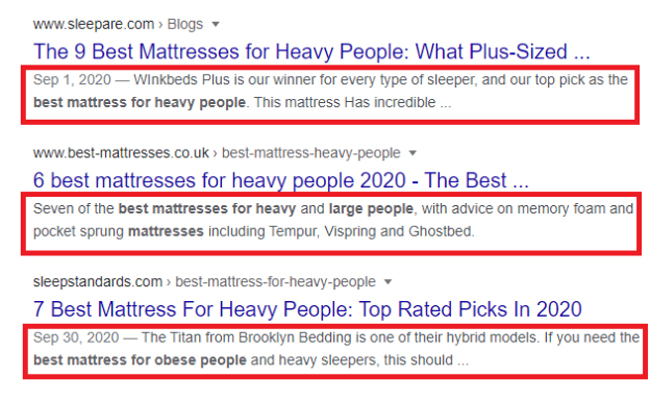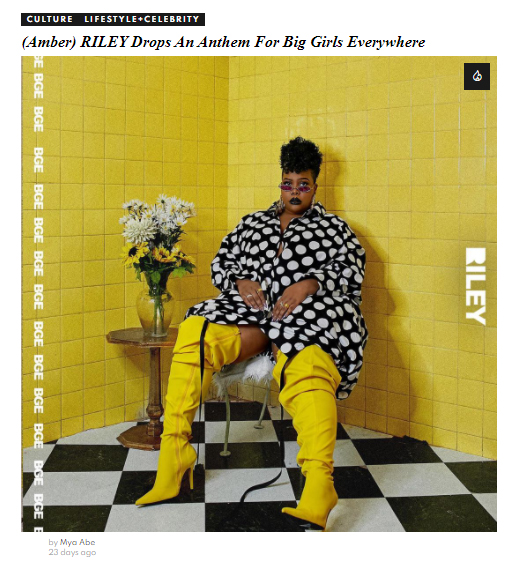If you’re in a competitive industry (who isn’t nowadays!), you won’t stand out unless you develop a unique brand voice. Brand voice dictates your style and tone across all content such as blogs, ads, social, videos, and more.
Your brand voice must appeal to your ideal customers and should reflect your core business values at the same time.
As search engine optimization (SEO) puts you in front of your audience, it’s your distinct brand voice that makes you memorable. It helps you stand out from the crowd, creates a bond with your ideal customers, and motivates them to take action.
But wait, how can you let your brand voice shine *and* appease Google? We’ll show you how to use your brand voice to bolster your SEO efforts and how to use it for SEO advantage.
1. Catchy Title Tags
What’s the first thing a potential website visitor sees when they come across your search result? The title tag. Write titles for search engines as well as humans, and use your unique voice to help your result stand out. Of course, follow the usual keyword optimization best practices such as:
- Include your main keyword
- Make sure the keyword is toward the start of the title tag
- Keep the length around 50 to 60 characters
- Use numbers and/or some useful and enticing information
When users see the keyword in SERP titles, they know that those posts will answer their queries. But, you can compel your ideal customers to click on your link by including other unique phrasing. Make your title tag a teaser of your post in a voice that aligns with your target audience.
When your brand personality shines through the title tag, it can increase your click-through rates (CTR). When more users click on an individual title and spend time consuming that content, Google’s algorithm pushes that result up the SERP.
2. Attractive Meta Description Copy

A meta description is the next significant text block that determines whether searchers will click on your post or not. With a few more words (150 to 160) at your disposal, you can tell the readers a little more about what to expect.
You should use your target keywords in the meta description as Google highlights those words in the SERP. At the same time, optimize meta descriptions for search intent and brand voice.
An exact match draws eyes, and the attractive copy motivates a click increasing your CTR and ranking over time.
3. A Unique Opening Sentence
A unique and punchy headline is the best start to any blog as it grabs the user’s attention immediately. Use the AIDA (Attention, Interest, Desire, Action) copywriting method to write the headlines. Write something that entices readers to read on, know more about the topic, and take action.
Ideally, your headline should include a variation of your keyword so that the visitor knows they’re on the right page. However, once the keyword is included you can add whatever other words you like to make them more unique. Get creative here, it’s OK to use a little humor!
Optimize the headline to meet the search intent and choose the words to align with your brand voice. When you entice readers from the very beginning, the users will spend more time on your page. It reduces the bounce rate and improves your page ranking.

4. Interesting H2’s and H3’s
H2’s and H3’s help break up any walls of text and make your content easily scannable. Most people will scan the headers first to decide whether to read the complete article or not. Using variations of the target keyword strongly indicates that the article is on-point and can answer the searchers’ query.
That being said, when you make them interesting for your readers, it hooks their attention. When you’re “speaking their language” they won’t be able to resist reading under the headers and consuming more of your content.
5. Quirky Copy
The real deal is when your audience begins reading your blog copy. Great copy can make your brand memorable.
Google is extremely smart and can understand a keyword beyond its syntax. So you don’t need to worry about adding the exact keywords more than a couple times in your copy. Instead, focus on offering value to your audience by meeting the query’s search intent and answering user questions right away.
Let your personality shine through in your copy! Set the tone for your content based on your target audience and company values and use it consistently throughout the text. For example, The Curvy Fashionista targets plus-size women like many other blogs. But, their sassy, unapologetic attitude makes them stand out and sets the tone for their copy.

6. Your Own Writing Style
Choose a unique writing style to serve as your brand identity. Writing style dictates the words you choose and the length, structure, and complexity of the sentences. Align your writing style with your target audience and own it with your personal touch.
Let’s look at The Curvy Fashionista again. You can see their confident and carefree attitude in their choice of words and even in their images. It helps them attract their ideal audience, i.e., the bad-ass curvy women, and makes their brand easy to remember.
Now, what if your target audience is high-powered executives, CEOs, and decision-makers? You might want a more formal, business-like writing style. You can see examples of that in Entrepreneur and Business Insider.
7. Fun Text Callouts
Text callouts can be a powerful tool to highlight important information and show your brand personality at the same time. You can use them to bring users’ attention to your unique selling points, offer additional resources, and provide explanations to technical terms.
Use your branded colors in the callout CTA, boundary, and background. Make sure the callout text adapts the style and tone of the rest of the copy. They also break the monotony of your blog and improve engagement.
8. On-Brand Imagery
Posts with images get 94% more views, so on-brand imagery is crucial for building a solid brand impression. Make sure there’s a balance between text and images. Use images that advance the meaning and purpose of your content. Images make your blog enjoyable by breaking its monotony. You can also use them to explain complex ideas in a visually appealing way.
Images improve the user experience, and the time they spend on your content. As the dwell time increases, the bounce rate decreases. Interesting imagery also boosts your SEO efforts by appearing in the image search results.
So, make sure all images incorporate brand colors and have your company logo. Design elements that showcase your brand personality so the viewers can identify them.
For example, take a look at the text, theme, and design of Mountain Dew’s content. The company relates itself to anything labeled “extreme,” and you can see that in their color choices, text, and themes.

9. Topic Choice
No matter how you optimize your content, if you’re unable to create the right content for your audience, you will not gain and sustain its attention. Your topic choice should respond to your ideal customers’ pain points and fit with your content strategy.
Today the SEO model is not centered around keyword placements so much as the search intent. Take Ahrefs, for example. All of their topics have SEO potential, interest their users, and raise awareness about their tools’ effectiveness.
So, choose a keyword for its search volume but make sure it aligns with your brand values. It means meeting audience expectations and addressing their pain points. Offer your visitors a seamless experience through valuable and actionable content.
Satisfying the search intent of your ideal customers is arguably the best SEO advantage of shifting focus toward branding. When your topics attract the right customers, they build a long-term association with your company.
10. Build Links to On-Brand Influencers
With influencer marketing, you can earn as much as around $5.20 per dollar of investment. But, finding the right influencer for your brand isn’t an easy job, because “true influence drives action, not awareness,” says Jay Baer. It would be best to make sure that the influencers you choose to partner with complement your brand and align with your company values.
You can potentially do an article swap, send them products or feature them in a round up. There are tons of different ways to partner with relevant influencers and build links at the same time.
When you partner with an influencer, you should let them decide how they convey the message to their audience. Only they know how to offer a credible and authentic experience to their followers. Today consumers can detect an advert cloaked under a personal recommendation. So, it’s better to hand the reins of your campaign to your influencer.
That’s why it’s crucial to choose influencers, whose voice and style match your brand voice. It will allow their followers to build an instant connection with your brand. These sorts of influencers can bolster your brand image more convincingly.
Your brand voice is a powerful optimization tool to attract and engage your ideal audience in this highly competitive marketing landscape. Everyone targets the low-hanging fruit, i.e., easy to target long-tail keywords, but Google is smarter now, and its sole aim is to meet user intent.
When your brand voice aligns with your ideal customers’ expectations, it boosts your SEO efforts and makes your content attractive for your audience. A consistent and unique brand voice is vital to increase your visitors and convert them into buyers and followers.





